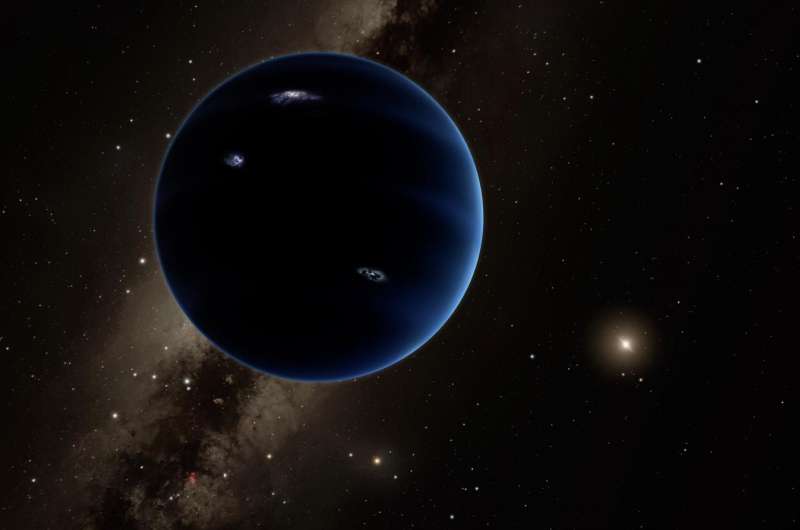January 12, 2017 report
Simulations suggest Planet Nine may have been a rogue

(Phys.org)—Space researchers James Vesper and Paul Mason with New Mexico State University have given a presentation at this year's American Astronomical Science meeting outlining the results of simulations they have been running to learn more about Planet Nine—a planet that many in the space science community believe exists far beyond Pluto. They presented evidence suggesting that if Planet Nine is out there, it is likely a rogue.
Planet Nine was first predicted to exist just two years ago, when a team of investigators noticed what appeared to be an unknown gravitational influence in the outer solar system. Since then, other researchers have also noticed gravitational influences consistent with a planet on the order of 10 times the size of Earth. Prior research has also suggested that if the planet does exist, it likely orbits the sun at approximately 1000 AU (the Earth resides at 1 AU). In this new effort, the researchers ran 156 computer simulations designed to show what sort of impact such a planet would have on our solar system if it came from somewhere else—a rogue planet that wandered close enough to our sun to be captured by its gravitational pull.
Rogue planets are those that either developed outside of the solar system, or developed in another star system and then somehow escaped. In either event, they travel alone through space.
The researchers report that their simulations showed that 60 percent of the times a rogue planet encountered our solar system, it came in and then left, sometimes taking another smaller planet with it. In 40 percent of cases, however, the rogue was captured and remained in orbit. The simulations also suggested that if such a rogue was captured, it could orbit the sun at the speculated distance and that it was unlikely that a planet any bigger than Neptune has ever entered our solar system—the orderliness of our system suggests it has not been disturbed since the period when the solar system was created.
Space scientists have expressed a strong belief in recent months that Planet Nine will be confirmed soon, perhaps as early as next year as more effort is put into finding it.
More information: 424.05 Simulation of Rogue Planet Encounters with the Solar System: Is Planet 9 a Captured Rogue? (James Vesper) adsabs.harvard.edu/abs/2017AAS...22942405V
Abstract
Rogue, or free-floating, planets may be abundant in the Galaxy. Several have been observed in the solar neighborhood. They have been predicted to even outnumber stars by a large fraction, and may partially account for dark matter in the disk of the galaxy, as the result of circumbinary planet formation. We performed N-body simulations of rogue encounters with the solar system with a variety of impact parameters. We find that Jupiter mass and higher rogues leave a significant imprint on planetary system architecture. Rogue formation models are therefore constrained by observed planetary system structure. We speculate that if rogue planets are abundant as predicted, then, Planet 9 may be a captured rogue.
© 2017 Phys.org



















